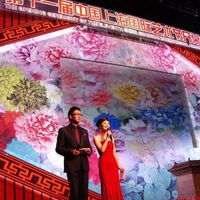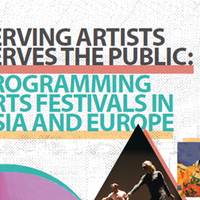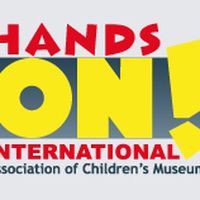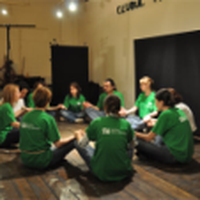Asian festivals in a global era
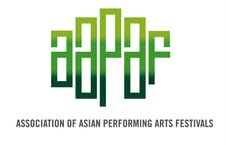
Interview with Low Kee Hong of the Singapore Arts Festival
To continue with the dialogue about today’s trends on festivals, Mr. Low Kee Hong, General Manager, Singapore Arts Festival and Chair of the Association of Asian Performing Arts Festivals (AAPAF) kindly answered our questions:
What is the purpose of the AAPAF?
AAPAF was founded with the aim to recognize the growth of arts festivals in the Asian region; identify the potential advantages a regional festival network offers in co-sharing, commissioning, touring works, spin-offs in joint marketing efforts; providing a platform to connect with other networks and to access funding beyond the region.
How does AAPAF succeed in bringing festivals together? Is there any specific programme or exchange project that links one festival to another?
A regional festival network can leverage on geographical proximity and synergies in programming interests and directions. As such, there are opportunities in co-sharing, commissioning, touring works, spin-offs in joint marketing efforts. A regional network also provides a platform to connect with other networks and possibly access funding beyond the region.
For example, AAPAF, the European Festivals Association and the Confederation of Australian International Arts Festivals are members of each other’s networks, and these relationships support a greater connectivity in the wider international festival circuit.
AAPAF currently has 12 full members and 19 associate members, and we meet periodically, through formal meetings and exchanges through AAPAF, as well as informal invitations to each other’s festivals, programmes and networking platforms.
Since the inauguration of AAPAF in 2004, several co-commissioning and collaboration projects have come to fruition, as a result of AAPAF members committing their energies and resources to creating and touring new work together. An example was the MATA Dance Collaboration Project in 2007 which was co-organized by AAPAF and the CID-UNESCO Korea Chapter, and produced in cooperation with AAPAF members Hong Kong Arts Festival, JakArt, China Shanghai International Performing Arts Festival and Singapore Arts Festival.
In Asia, are festivals generally organized by a private or a state institution? Please give us some examples of how a festival is managed in Asia.
Festivals in Asia run on very different models, as the state and sophistication of arts development and support in various parts of Asia are highly disparate. Some festivals are solely run or are heavily dependent on government funds, while others are supported primarily by corporate or private funding. There are also festivals such as the Singapore Arts Festival that are supported by a tripartite funding structure, i.e. audiences (box office), corporate (sponsorship) and government.
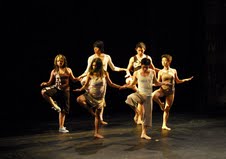 In general, what is the period in which the team of festival works? During the entire year, or only in a period before and after the time in which the festival takes place? Please give us some examples of different practices
In general, what is the period in which the team of festival works? During the entire year, or only in a period before and after the time in which the festival takes place? Please give us some examples of different practicesFestival planning in general typically extends beyond the year in which it is held. This is dependent on the festival’s resources and planning cycle, and is also contingent on the availability of artists, collaborators and partners etc.
What links of international cooperation are between EFA and AAPAF?
EFA and AAPAF are affiliate members in each other’s networks, and are invited to participate in each other’s Annual General Meetings, conferences and networking platforms. Moving forward, we hope to accelerate this bilateral relationship through specific collaborative efforts between both associations and our members.
What is, in your opinion, the most successful selector? The artist or the manager? Or is more about the artist [artistic director] working together with the manager (executive manager)? Please tell us some examples from different practices in Asia.
This is very much an integrated and symbiotic process. The artist develops ideas and projects that he/she feels are pertinent to express and articulate in this time and day, while the manager reviews their feasibility and appeal, connects them with available resources and partners, and together with the artist, realize the work. Effective and honest negotiation between artist and manager can birth a robust piece of work that is well-researched, sufficiently-resourced and has the capacity to tour beyond its own shores.
What is in general the structure of the team in one festival? What are the most important roles of each member/department?
The set-up of a festival team varies from organization to organization. Typically however, there would be an Artistic Director supported by a programming and operations team. There would also be marketing, communications and possibly education outreach arms that work towards making the programme more accessible and appealing to its audiences.
Depending on the financing structure of the festival, a sponsorship or development team could serve to secure funding required to run the festival or promote its projects to possible collaborators and presenters.
In a time of financial crisis, usually the European Festivals are always on the quest to find different solutions in order to maintain their level, visibility, programming, etc. How has the Asian festivals reacted to the financial crisis, if they adapted at all?
The festival landscape is very much uneven and diverse in Asia. Crisis aside, many festivals in Asia are not particularly well-resourced. It’s fair to assume that all festivals, Europe and Asia alike, want to see their dollar go further, especially during difficult economic times.
Some festivals may have scaled down accordingly if financing is less forthcoming than before, while others may turn to collaborating on regional tour presentations to reduce programming cost. Marketing and communications, seemingly ancillary services to some, may also see their budgets cut in response to a tough economic climate.
The onus is on festival directors and managers to stay focused on what their festival stands for and wants to support, and to creatively tap into support and funding channels to make that happen.
About the author:
Florentina Bratfanof has worked in the theatre field in Romania in the past 9 years, first as a Press Officer for ACT Theatre, the first independent theatre in Romania, then as a cultural journalist for an online platform website also about theatre events and projects. She has been involved as well the Press Office of several theatre festivals; the 2008 edition of Romanian National Theatre Festival, Bucharest, Romania; Underground Arad Fun 2009, Arad, Romania; 36th International Festival of Alternative and New Theatre, Novi Sad, Serbia; and again 2009 edition of Romanian National Theatre Festival.
About the interviewee:
Low Kee Hong is currently the General Manager of the Singapore Arts Festival. Formerly, Kee Hong was the General Manager of the Singapore Biennale. From 2002 to 2005, Kee Hong joined TheatreWorks (Singapore) as its Associate Artistic Director. During his appointment, Kee Hong introduced a whole new genre of creative works that recalibrates the bounds between art, science and ‘live’ performance. This process began with a new laboratory called the DAVINCIPROJECT. From the notes, discoveries and wild ideas hot-housed in the DAVINCIPROJECT emerged collaborations like Balance: Space • Time • Movement (August 2003). For Balance, Kee Hong was awarded the Best Director and Best Set Design awards at the 4th Straits Times Life! Theatre Awards. It also picked up the award for Best Original Script.
A seasoned performer on the international arts festival circuit, he has toured extensively to Europe, Japan, Hong Kong, Australia and Indonesia.
He also served as writer, researcher, dramaturg and Associate Director on several regional projects including the Continuum Asia Project/Mekong diaries (LAOS), the Flying Circus Project and the DVD series on Southeast Asian Performing Arts and Artists. The volume on Burmese Marionettes was release recently.
Kee Hong is also an active scholar, holding a Masters in Sociology. He has taught at the National University of Singapore (Sociology) from 1997 to 1999 and his academic writings have been published by Routledge and other critical journals.
Further reading:
- AAPAF: www.aapaf.org
- MATA Dance Collaboration Project in 2007: MATA
- About CID-UNESCO Korea Chapter and Japanese Contemporary dance: CID UNESCO
- Hong Kong Arts Festival
- Singapore Arts Festival
For the first part of this interview please refer to the following link: European festivals in a global era
Similar content
14 Jun 2010
posted on
18 Apr 2013
posted on
08 Nov 2010

